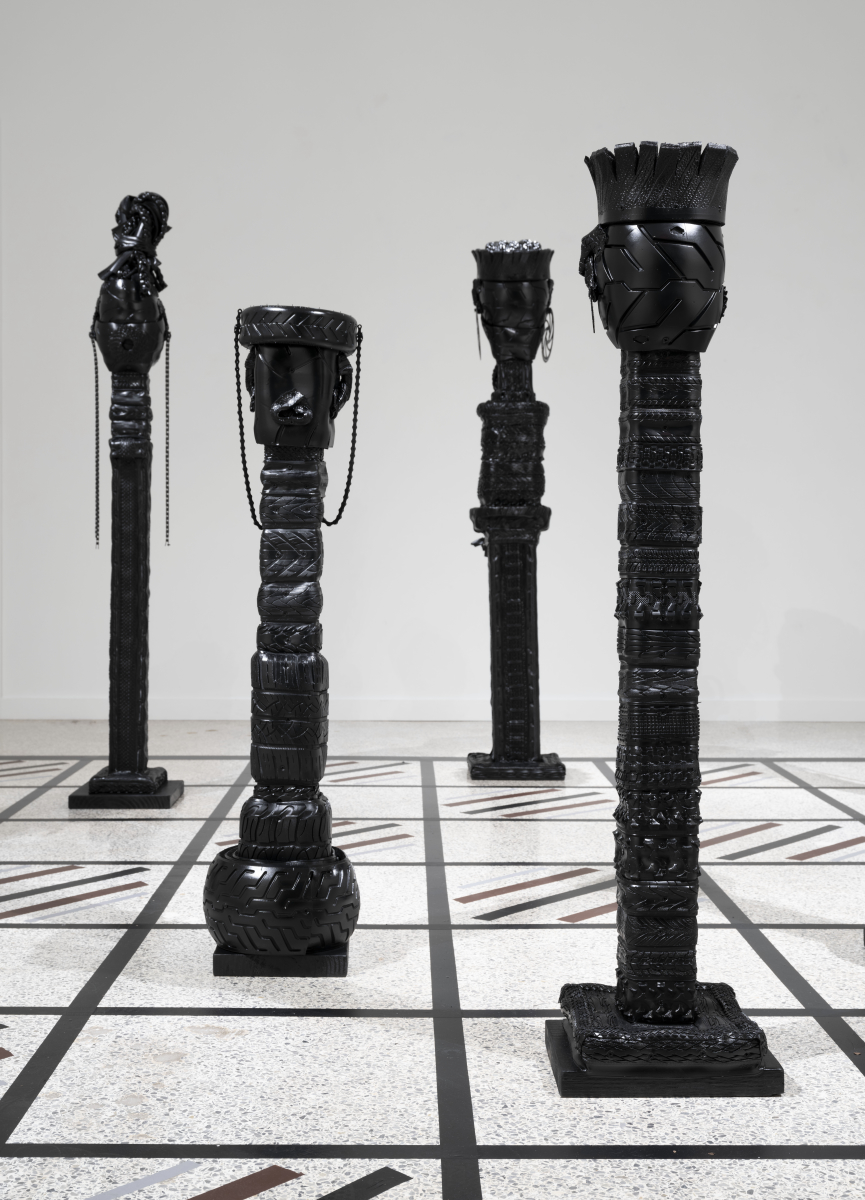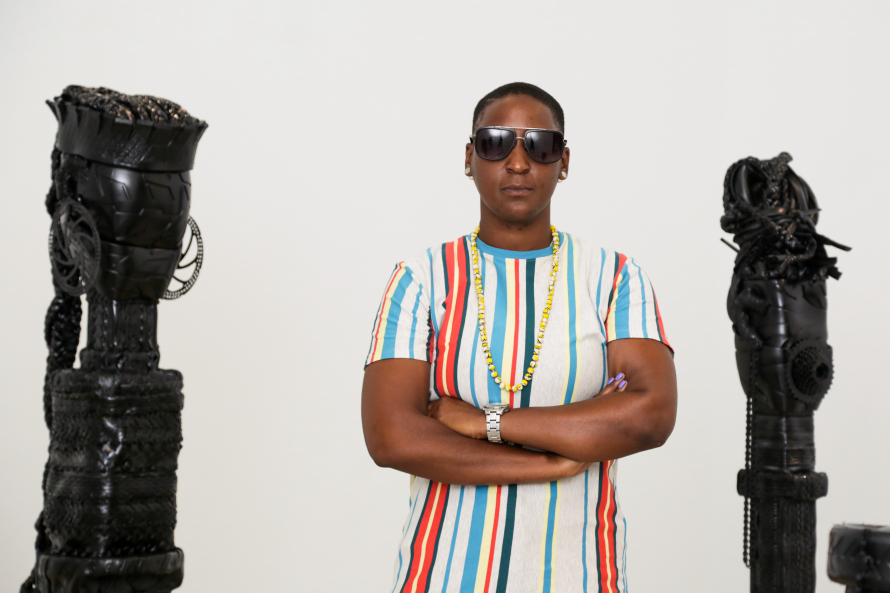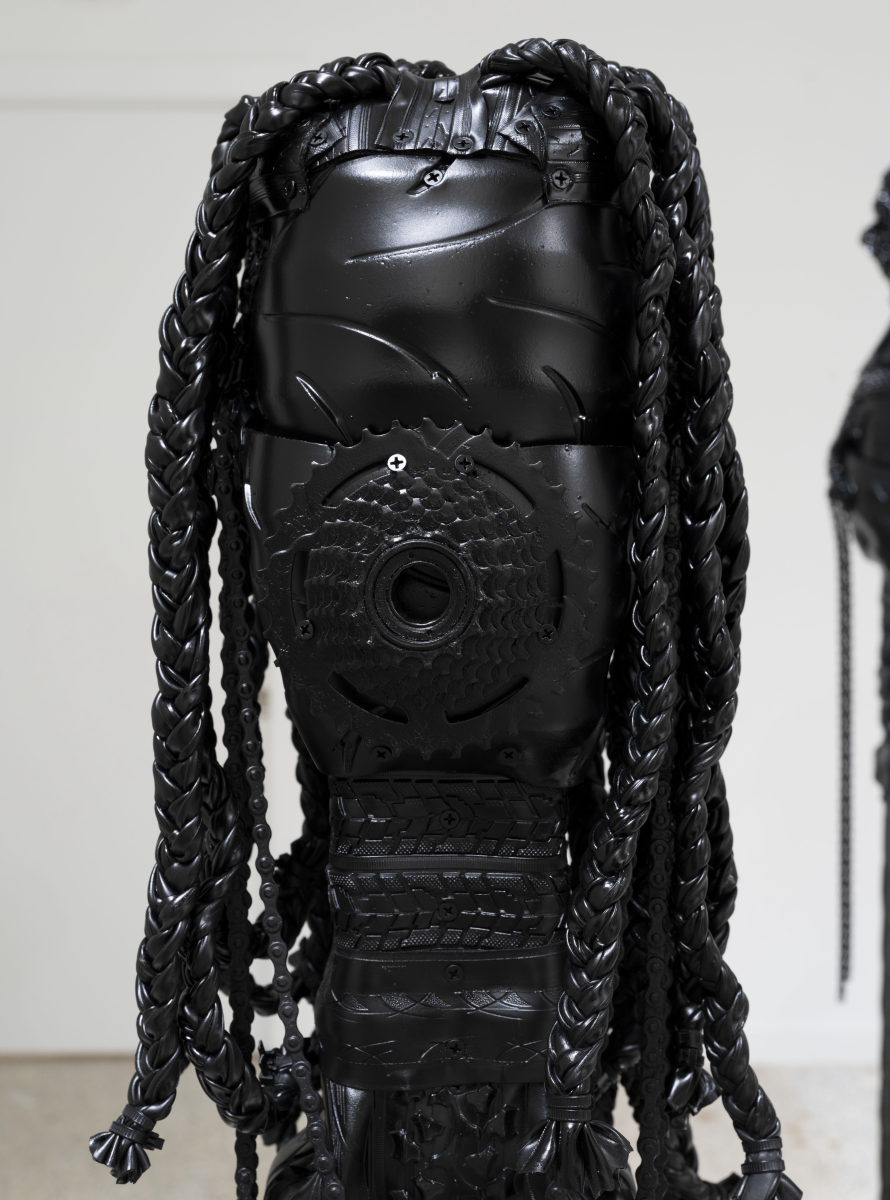In the last year or so, Kim Dacres has developed a fascination with chess. The hit Netflix show Queen’s Gambit aside, she revisited old classics like Searching for Bobby Fischer (1993) and Queen of Katwe (2016) and started testing her own moves in online chess rooms. “I eventually couldn’t help but think how my life is similar to a chess game where I have to be conscious with each move,” the Bronx-based artist reveals. The strategy game mirrors the experiences of her Jamaican family and her peers of color who “have to put our best foot forward and support one another when entering predominantly or historically white spaces,” she says.
Dacres’s current solo exhibition, “Black Moves First,” at GAVLAK gallery in West Palm Beach stems from her interest in the game as well as her questioning of its elemental rule. “But why does white always move first?” Dacres asks rhetorically. Looking at the dynamics of the game through the lens of today’s social landscape, “Black folks have to navigate a world where they’re not given the priority to make the first move,” she explains.

The show’s eight mixed-media sculptures are made of automobile and bicycle tires in addition to a range of hardware that Dacres assembles at her studio with jigsaw, drills and heavy-duty scissors. Though monochromatic, their varying sheens reveal the chromatic range of the color black. The eye level height totems pay homage to matriarchal figures in the artist’s family, and personalities are represented in facial expressions and sartorial details.
“My aunts came to this country first,” the artist says. “The journey has been similar to a chess game where they had to make strategic decisions of who was best equipped to leave Jamaica first in order for the rest to survive and stand up for each other.” Cynthia Rose Knight Crown and Merle Rose Knight Crown (both 2021) celebrate these pioneers. The Rook Crown sculptures are dedicated to Dacres’s grandmothers, Amy (deceased) and Lillian Veronica whose admirations for church hats are honored with tires transformed into elegant headpieces. The artist’s two younger twin sisters represent the Bishops (Michelle and Christina) with long braids made of bicycle inner tubes. The sculptures’ human auras are manifestations of Dacres’s artistic mastery: attributing lifelike touches to her materials.

Earlier this month, Dacres joined a panel discussion with artist British artist Veronica Ryan during New Wave Art Wknd in West Palm Beach, where they shared their experiences searching for discarded materials as Black women artists. Ryan asks for disposable avocado trays at Brooklyn grocery stores while Dacres visits tire shops and hardware stores around Harlem, The Bronx and Brooklyn r. “Walking with a wagon full of old tires prompts certain types of questioning from strangers and I am willing to challenge any presumption,” and explain her art intention to inquirers, she says.

The inspiration to find beauty in disposed car parts came to Dacres over a decade ago while studying Political Science, Art, and African Studies at Williams College in Massachusetts. “I was driving on a road just off the Taconic State Parkway and felt burned out after being heavily involved with social and leadership organizations at school,” she remembers. When she saw a torn tire roadside, she stopped to examine its unlikely charm. “I felt similarly,” she says.
After a decade working in education, she returned to the material a few years ago. Dacres initially transformed tires and hardware bits into busts. However, a few incidents where people overlooked the works’ physicality and touched or leaned onto them prompted her to leave pedestals for the totemic scale. “As a history buff, I understand that chess is not a game, it’s about war,” she says. “Entering any space as a Black queer woman artist is not so different either.”










 in your life?
in your life?

